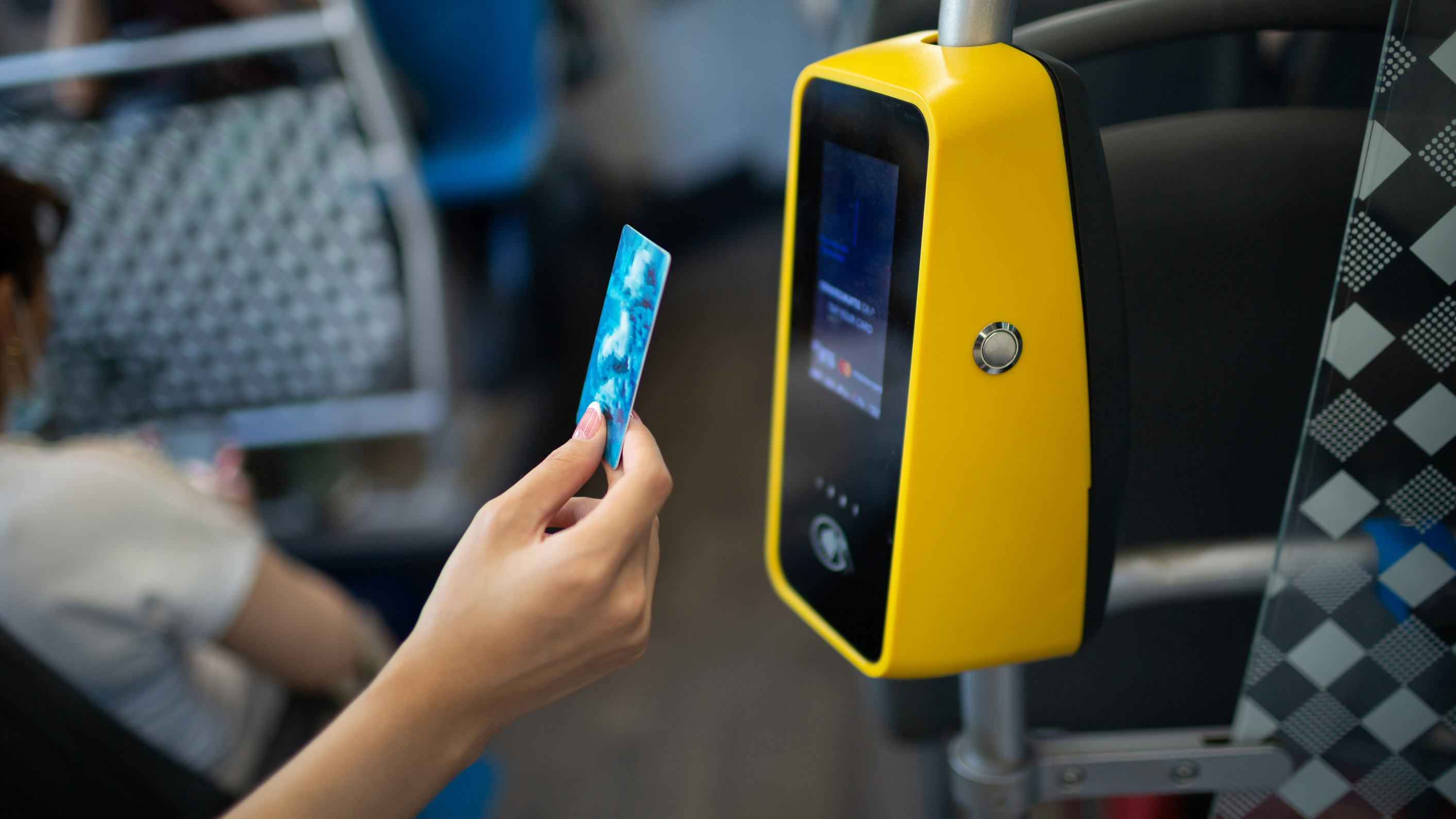Adopting contactless payments in US public transit: overcoming the challenges
by Kalin Hitrov

Contactless payments are transforming public transit in the US one tap at a time, but before agencies and operators can reap the rewards, they must navigate the adoption process.
The technology that enables contactless open-loop payments is not only for in-store experiences. It’s also being harnessed to create friction-free travel by simplifying and expediting public transit payments. The hassle of negotiating a local transit ticketing system and handling cash is no longer acceptable as tapping to pay becomes a prerequisite for the modern passenger.
By empowering riders to tap into transit systems with the contactless-enabled bank cards or devices they carry in their pocket, which become their ticket, both transit authorities and their customers benefit from improved efficiency. Passengers receive the frictionless payment experience they crave. While agencies and operators free themselves from the operational costs of managing a legacy system, such as cash handling and maintenance.
It’s not always as simple as investing in this contactless technology, plugging it in and reaping the rewards. Too often this digital transformation is overcomplicated by adopting an expensive and inefficient build-from-scratch approach, presenting transit authorities with challenging obstacles.
Challenges and solutions
Cost
Convenience comes at a cost – which can escalate if agencies and operators overextend their resources. Proprietary open-loop systems can be costly to implement amid a complex design, build, operate, and maintain process. As well as purchasing and implementing compatible hardware such as card readers, they are responsible for the cost of developing and deploying the software that powers it.
Solution: Procuring a modular solution using multiple specialist vendors whose solutions, such as fare calculation and payment processing, plug-and-play together significantly reduces implementation and deployment costs. This is being facilitated by the California Integrated Travel Project (Cal-ITP), which makes it straightforward for public transit providers to purchase the essential hardware and software needed to accept contactless payments through competitively priced contracts.
Implementation
The implementation of an open-loop system on a public transit network creates challenges, both from a technological and logistical perspective – from integrating hardware and payment processing platforms to managing a complex network of payment industry participants, each with unique capabilities, interests, and compliance rules.
Solution: State-level programs such as those offered by Cal-ITP create economies of scale, facilitate the exchange of knowledge, and provide a framework for contract terms and vendor agreements. These assistance programs also create an intuitive template for other areas of the US. Cal-ITP provides materials and support to help public transport providers in California and beyond navigate the implementation process and modernize their fleet.
Working with the local public transit operator, OASA, Littlepay helped breathe new life into the Athens public transit system by deploying VSAM technology – a small modular add-on that slots inside existing validators to “switch on” open-loop transit payments. Not only did this plug-and-play solution remove the need for major changes to the existing validator; it meant OASA didn’t have to purchase new open-loop compatible validators.
Backend payment infrastructure
Having tapped their contactless card, or contactless-enabled device, on a reader to validate it and access transit services, the passenger’s payment is processed by the backend infrastructure. This handles aggregation, fare calculation and settlement through the banking network, exposing the open-loop system to declines, fraud and fare evasion.
Solution: As an approved vendor of transit payment processing services to agencies across the US, Littlepay provides three layers of protection that mitigate these threats: deny list management, automatic debt recovery and revenue inspection. For instance, the introduction of PAR deny lists prevents persistent fraud by identifying fraudulent behavior and blocking the account before it can cause more damage, significantly reducing the risk of unpaid journeys.
Unbanked and underbanked passengers
If transit agencies remove the option to pay in cash, unbanked and underbanked passengers – people who do not use the services of any banking institution, and those who have insufficient access to financial services – may get left behind. This is a significant section of the US population, with 6% of adults (around 15.6 million people) considered unbanked.
Solution: A report from the National Center for Sustainable Transportation suggests that unbanked passengers have the same preferences as everyone else: the clear majority (78%) of unbanked respondents are interested in using alternatives to cash payment for transit; when asked what alternative to cash they would like to use, the majority (57%) selected a government-issued prepaid debit card, second was prepaid debit card (55%) and third was a tie between credit card, debit card, and mobile phone (32-33%).
Consequently, Cal-ITP works in partnership with payment networks, such as Square/Block, to create bank-like accounts for the nearly 25% of Californians who are currently unbanked – ensuring they can benefit from the transition from cash to contactless.
Success stories
In 2021, Cal-ITP successfully initiated demonstration projects to implement contactless open-loop fare payments in Monterey, Sacramento, Santa Barbara and South Carolina.
Monterey
Cal-ITP’s first contactless payment demonstration was launched with Monterey-Salinas Transit (MST), with a focus on equity and a desire to enable as many residents to ride on its fixed-route bus fleet as possible.
Following the successful demo, MST selected technical partners from Cal-ITP’s Mobility Marketplace to transition to a full ‘tap-to-ride’ roll out across its network. Vendors Kuba (for fare validators), Littlepay (for fare calculation software), and Elavon (for payment processing) were selected from among those awarded Merchant Service Agreements (MSAs) by the State of California – contracts that allow transit agencies to purchase directly from vendors without further competitive bidding. And they are providing their services within a modular system.
Sacramento
Sacramento Regional Transit (SacRT) worked with Cal-ITP to roll out a contactless payment demo across all its light rail vehicles. The modular system allowed SacRT and Cal-ITP to deliver a frictionless solution quickly and cost-effectively, removing the need for complex integration with existing legacy closed-loop systems.
Four agencies joined forces to use the State of California’s MSAs. Cal-ITP supported the agencies through the process of purchasing open-loop payment acceptance devices and fare calculation software using the competitively awarded contracts.
Santa Barbara
Cal-ITP launched two contactless payment demonstrations in Santa Barbara concurrently: with the Santa Barbara County Association of Governments (SBCAG) Clean Air Express commuter service; and with Santa Barbara Metropolitan Transit District (MTD), whose buses share stops with the Clean Air Express. The implementation was an instant success: nine months after launching, SBCAG saw strong growth in contactless payment adoption, which jumped from 1.26% in July 2001 to 12.80% in April 2022.
South Carolina
Following its rollout of contactless payment acceptance devices on its bus fleet, South Carolina’s Coast RTA became the first public transit agency from another state to use California’s MSAs. With Cal-ITP’s support, they leveraged the contracts to purchase and install the hardware and software services needed for accepting passengers’ debit and credit cards and mobile wallets for fare payments.
Within days of launching the new fare payment system, Coast RTA saw that 15% of riders had already switched from a prepaid fare card to contactless.
Embracing the future
Around the world, passengers are voting with their wallets and phones amid demand for the convenience of open-loop payments – and transit authorities are taking note. According to research by Visa, of transit agencies that do not currently have open-loop technology, 83% plan to implement it (70% within the next two years).
These organizations will be entering a dynamic space where advancements in payment technology aim to keep pace with evolving passenger preferences – from EMV fare collection to real-time rider notifications.
Take decisive steps to make your urban mobility ecosystems frictionless and inclusive by proactively addressing the challenges associated with embracing contactless payment solutions. Find out how Littlepay can help you overcome these common obstacles and leverage open-loop payments as part of your long-term modernization strategy by contacting our team today.
Trending Topics

Project Highlights: Washington DC’s record breaking upgrade to accept open loop payments

Nevada County Connects leverages Cal-ITP’s Mobility Marketplace to elevate the payment experience across its bus network

 Insight
Insight
 Knowledge
Knowledge
 News
News



